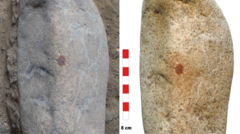In an intriguing discovery that sheds light on the long-standing relationship between bedbugs and humans, a new study published in the journal Biology Letters highlights the transformation of bedbugs into one of humanity's first urban pests. Researchers, led by Warren Booth from Virginia Tech, argue that bedbugs diverged from a bat-feeding ancestor roughly 245,000 years ago and adapted to thrive in human habitats.
This transition is believed to have taken place when early humans, such as Neanderthals, occupied caves that were also home to these bloodsucking bugs. Booth notes, "You're not going to find a bedbug in your garden," underscoring their complete reliance on humans for survival and distribution.
The study further outlines a significant population increase in bedbugs around 13,000 years ago, coinciding with the shift from nomadic to settled lifestyles. Although often viewed as a nuisance, bedbugs do not carry diseases and primarily cause minor irritation upon feeding. This long-term cohabitation with humans marks a unique evolutionary journey for both species, highlighting the intertwined narratives of humankind and one of its most persistent pests.
This transition is believed to have taken place when early humans, such as Neanderthals, occupied caves that were also home to these bloodsucking bugs. Booth notes, "You're not going to find a bedbug in your garden," underscoring their complete reliance on humans for survival and distribution.
The study further outlines a significant population increase in bedbugs around 13,000 years ago, coinciding with the shift from nomadic to settled lifestyles. Although often viewed as a nuisance, bedbugs do not carry diseases and primarily cause minor irritation upon feeding. This long-term cohabitation with humans marks a unique evolutionary journey for both species, highlighting the intertwined narratives of humankind and one of its most persistent pests.




















